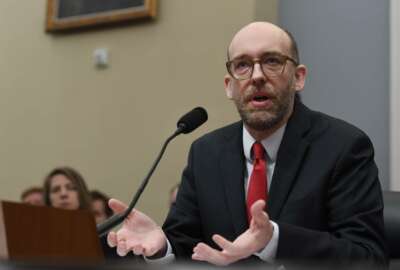
The 3 Ps: Pay, pensions and premiums going up?
It will be late this year, probably November or December, before active and retired federal workers find out how much extra money they may have next year.
It will be late this year, probably November or December, before active and retired federal workers find out how much extra money if any they may have to spend next year. And it won’t be until later that they learn how much more they will have to shell out for the 2020 health insurance coverage.
For now it is educated guess work at best.
- Pay raise: Will white collar employees get one in January? Odds are slightly in their favor, but it’s not going to be easy. So make that a maybe.
- Cost of living adjustment: Will federal, military and Social Security retirees get a COLA in January? So far the numbers are in their favor. But the countdown that counts (the Consumer Price Index numbers for July, August and September) are yet to come. So make that a probably.
- Health premiums: Are they going up in 2020? Does a bear forage in the forest?
It is safe to say that most health premiums in the Federal Employee Health Benefits Program will be going up in 2020, as they did in 2019 and 2018, and the year before that. Medical inflation generally outpaces regular inflation — big time! Some plans, those that are favorites of federal retirees, will be going up more than others. A few may hold the line and one or two may actually reduce premiums.
Bottom line is nobody will know until just before the November open season. Then workers and retirees will have an extended period and a lot of help to shop for the best deal. Most feds, retirees and their survivors, have anywhere from 20 to 30 plans to choose from. The government will pay more than 70% of the total premium.
In a best-case scenario workers will get a raise, retirees will get a COLA and premiums won’t go up enough to eat up those increases.
So what’s the outlook?
On today’s Your Turn radio show we’ll be talking with Federal News Network reporter Nicole Ogrysko, who’s been following the pay raise in Congress. On Monday the House Appropriations Committee approved a 3.1% pay raise. If approved by the full House and Senate that would lead to a 3.1% raise divided between an across-the-board increase of 2.6% with another 0.5% provided for locality adjustments.
The president has proposed no increase. He wants a system that would permit individual agencies to allocate raises based on merit and performance, as defined by that agency.

We’ll also be looking at upcoming changes in the Thrift Savings Plan designed to make it easier for participants to withdraw money. Expect to hear from Mike Meese, executive vice president and secretary of the American Armed Forces Mutual Aid Association. Founded in 1879, shortly following the battle of Little Bighorn, AAFMAA will celebrate 140 years serving military, veterans, and their families next week.
Listen at 10 a.m. EDT today on www.federalnewsnetwork.com or 1500 AM in the Washington, D.C., area. The show will also be archived on our home page so you can listen anytime or refer it to a friend or coworkers. If you have questions on pay, premiums or pensions for either of us, send them to mcausey@federalnewsnetwork.com before showtime.
Nearly Useless Factoid
By Amelia Brust
Goosebumps are inherited from animal ancestors; tiny elevations of the skin are caused by a contraction of miniature muscles that are attached to each hair. Each contracting muscle creates a shallow depression on the skin surface, which causes the surrounding area to protrude. The contraction also causes the hair to stand up whenever the body feels cold or a person experiences stress from fear or some other emotion. This is due to adrenaline.
Source: Scientific American
Copyright © 2025 Federal News Network. All rights reserved. This website is not intended for users located within the European Economic Area.
Mike Causey is senior correspondent for Federal News Network and writes his daily Federal Report column on federal employees’ pay, benefits and retirement.
Follow @mcauseyWFED
Related Stories





